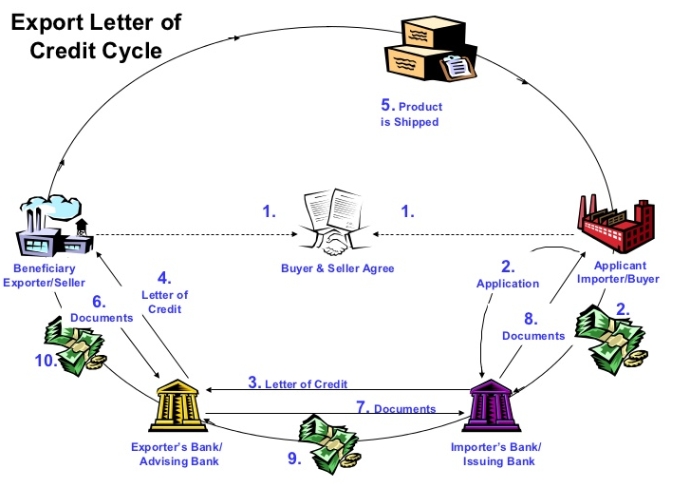Let’s just glance through above diagram to know the basic understanding of export lifecycle before we head towards the core part of this write-up.
Right from the process of execution of sale deed through shipment, insurance etc upto the delivery of goods to the doorstep of the importer under Letter of credit payment mechanism seems to be more complex and highly manual system. As a result, a few shortcomings are spotted out in this mechanism and so is the similar challenges appear in other modes of trade finance, such as collections, open account, and advance payment systems. A few are listed below:
- Lack of securities and collaterals
- The absence of counterparty willing to offer financing alternatives outside the banking system
- Cost-centric
- Learner experience difficulty
- Complex presentation
Impact of blockchain on trade finance: Trade finance is an activity that has been around for a while, but has not seen much innovation in that time. In fact, it is still a largely paper-based business. This makes it more error-prone, time-consuming and fraud-sensitive than it could be.
Blockchain has the potential to change this. It provides an efficient and secure way of quickly settling trade transactions. This brings down costs, lowers operational complexity, reduces risk and lowers working capital needs. The cryptographic security underlying blockchain technology enables information immutability and credibility. The distributed ledger architecture provides transaction transparency, simplicity, and traceability (refer above diagram).
Although Blockchain can have a large impact on the way transactions and ownership are recorded, it is important to note that there are actually two types of blockchains: public and private blockchains. On a public blockchain, all parties engage with each other directly on a peer-to-peer basis and there is no intermediary. There are also no barriers to entry to a public blockchain. On the other hand, private blockchains do have barriers to entry and a ‘gatekeeper’ who governs the access to the blockchain.
Public blockchains are more resilient to cyber-attacks, but for many networks, the lack of privacy is a real issue. We hence expect that most of the near-future applications of Blockchain relevant to trading will be either private blockchains or a mix of both private and public blockchains. When discussing the implication of Blockchain below, we describe the effects of private blockchains on which all parties to a trade are present (e.g. traders, banks, shipping firms and warehouse operators).
Microsoft Corporation and Bank of America Merrill Lynch announced a partnership in 2016 on blockchain technology as the software giant continues to expand the scope of its ‘Blockchain as a Service’ (BaaS) platform for its Azure clients. In an announcement at the annual SWIFT-organized Sibos conference, the duos emphasized their objective to revitalize the trade finance gamut which is currently highly manual, time-consuming and costly processes.
Microsoft and BOA would build and test technology, create frameworks, and establish best practices for blockchain-powered exchanges between businesses and their customers and banks, according to a press release.



 SHIB, BONE Prices Rally: Factors Fueling Memecoin Market Recovery Revealed
SHIB, BONE Prices Rally: Factors Fueling Memecoin Market Recovery Revealed  Senators Push for Stablecoin Regulation to Protect US Dollar Dominance
Senators Push for Stablecoin Regulation to Protect US Dollar Dominance  JPMorgan, Citibank Korea Face FTC Penalties Over Collusion; Supreme Court Upholds Ruling
JPMorgan, Citibank Korea Face FTC Penalties Over Collusion; Supreme Court Upholds Ruling  Alchemy Pay Forms Strategic Partnership with Worldpay to Expand Cryptocurrency Payment Channels
Alchemy Pay Forms Strategic Partnership with Worldpay to Expand Cryptocurrency Payment Channels  FxWirePro- BTCUSD Daily Outlook
FxWirePro- BTCUSD Daily Outlook  Pepe Coin Climbs 6%: Market Braces for Potential Profit-Booking Selloff
Pepe Coin Climbs 6%: Market Braces for Potential Profit-Booking Selloff  FxWirePro- Gold Daily Outlook
FxWirePro- Gold Daily Outlook  Geopolitical Tensions Trigger Crypto Market Crash; Bitcoin, Ether Prices Tumble
Geopolitical Tensions Trigger Crypto Market Crash; Bitcoin, Ether Prices Tumble  MEW Coin Eyes Recovery with New Bybit Listing, Sparks Investor Interest
MEW Coin Eyes Recovery with New Bybit Listing, Sparks Investor Interest  Indian Banks Disburse Employee Benefits Through Digital Rupee, Boosting RBI's Target Transactions
Indian Banks Disburse Employee Benefits Through Digital Rupee, Boosting RBI's Target Transactions  Michael Saylor Nets $370 Million from MicroStrategy Shares Amid Crypto Surge
Michael Saylor Nets $370 Million from MicroStrategy Shares Amid Crypto Surge 































